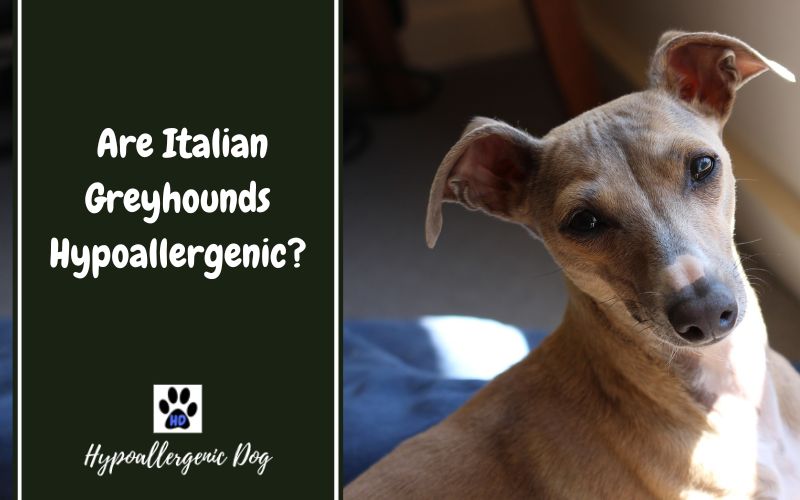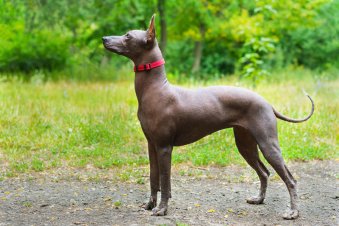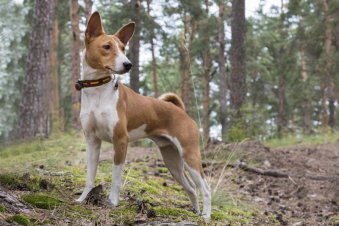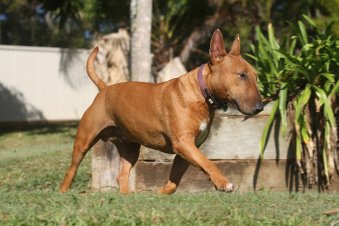Are Italian Greyhounds Hypoallergenic?
Yes! The Italian Greyhound is a small hypoallergenic dog breed that hardly sheds or drools.
The Italian Greyhound is a svelte, docile companion. These dogs are an exceptionally healthy breed that is low maintenance and thrives in compact living spaces, such as apartments. Most would expect that the Italian Greyhound’s deepest desire is the thrill of racing, however, they are also well known for their extreme attachment and devotion to their owners. These dogs crave the affection and attention of their people above all else! The Italian Greyhound (also affectionately referred to as IG or Iggy) is an expressive, naturally tidy dog that drools very little and is considered to be non-shedding.
For a quick summary of the Italian Greyhound skip to our Italian Greyhound dog breed summary further down the page.
Are Italian Greyhounds Hypoallergenic Dogs? Contents
Italian Greyhounds Quick Facts
About the Breed
Italian Greyhounds Training and Exercise
Italian Greyhounds Grooming and Care
Italian Greyhounds Health
Conclusion
Italian Greyhounds FAQ
Italian Greyhounds Facts Summary
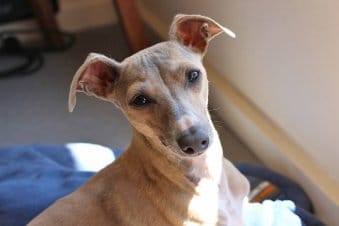
Italian Greyhound Quick Facts
| Hypoallergenic Dog: | Yes! |
| Shedding: | Low shedding |
| Drooling: | Low |
| Size: | Small |
| Breed Group: | Toy |
| Lifespan: | 12 – 15 years |
| Energy Level: | High |
| Trainability: | Moderate |
| Family Dog: | Not young kids |
About the Breed
The Italian Greyhound Physical Characteristics and Coat
The handsome silhouette of the Italian Greyhound is sleek, slender, and graceful. Their powerfully muscular, but condensed aerodynamic build means that they’re “faster than a speeding bullet” in the world of dogs. They have high energy which they need to burn, and will at times race around their home like a whirlwind – even after a good walk! But make no mistake, these dogs are also more than capable of being couch potatoes while indoors!
In fact, the Italian Greyhound is an ideal indoor pet. Their coat is, for all intents and purposes, non-shedding. One Italian Greyhound breeder states that she has 10 of these dogs in her lounge and no hair! Not only are they as non-shedding as you can get in a dog, but they also do not drool, and they possess a natural desire to be neat and clean.
These sighthounds are a small, hypoallergenic dog breed that usually stands from 12-13 inches at the shoulder (though they may get up to 18 inches) and weighs 8-11 pounds. They have a distinct hound-type appearance with their folded ears and slim, muscular build. IGs are similar in appearance to Whippets, Weimaraners and Basenjis. Their head is long and narrow with medium sized brown eyes and medium-sized ears that fold back across the head. They come in gray, slate gray, red, fawn, blue, black, white, or cream.
Italian Greyhound Temperament
Italian Greyhounds are a sensitive breed that is very affectionate, and desires nothing more than to be with you all of the time, wherever you are! They will happily adjust to your lifestyle and habits, so long as they can get the benefit of your companionship. Typically, Italian Greyhounds are not a very destructive breed, as long as they receive enough attention and affection. Rather, they are generally relatively calm and relaxed indoors, and highly affectionate with their people.
Italian Greyhounds are a small, non-shedding, hypoallergenic breed that is very loving and affectionate!
Are you considering getting an Italian Greyhound?
Here’s what to watch out for :
- Italian Greyhounds are even-tempered dogs but they may be standoffish if they’re not socialized enough from an early age.
- These dogs are sensitive to punishment, independent, and can be a challenge to potty train. (but this book can help)
- Although they’re couch potatoes indoors, its important to keep your Italian Greyhound leashed if they’re not in a fenced in enclosure, because they have a very strong prey drive and can bolt like bullet!
- You may need to put sunscreen on your IG to prevent them from getting sunburned, and dress them in a sweater to protect them from cold weather. They are predominantly inside dogs and not tolerant of extreme temperatures.
- While their coat is pretty easy to maintain, be prepared to brush their teeth regularly! They are prone to dental disease.
Italian Greyhound Training and Exercise
Encouraging Good Behavior In Your Italian Greyhound
Italian Greyhounds can be difficult to potty train so training should start from day one and owners must be patient and unwavering with the rules of the house. Iggy’s will typically not go to the toilet on wet grass, preferring a path over the wet grass. If you live in a cold or wet climate, you may need to consider using a litter box or building a shelter over some grass so your IG can feel comfortable when toileting.
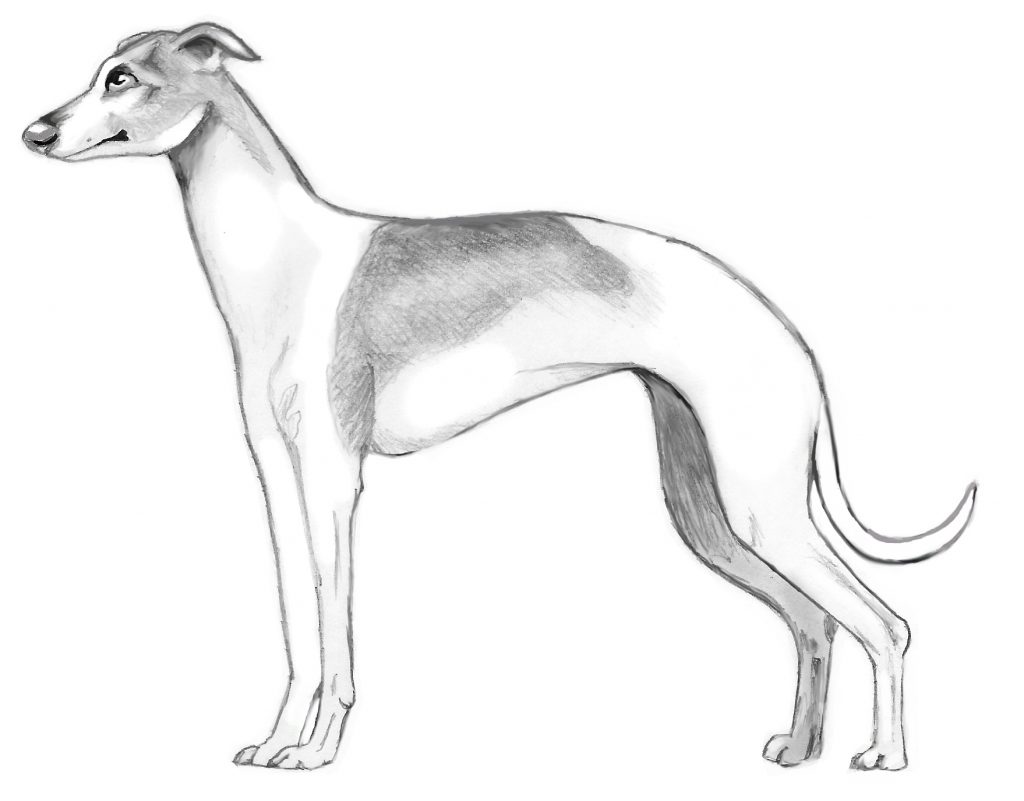
This breed is not necessarily people-pleasing and definitely has a “what’s in it for me” attitude when it comes to training. Remember to use a gentle, calm voice, and if your IG needs disciplining, use a firm voice rather than shouting – you will gain far more respect and have a greater chance of their obedience this way! Training sessions should be no longer than 10 minutes, and they should be fun, and positive. Be sure to mix old tricks in with whatever new ones you may be trying to teach, so your Italian Greyhound doesn’t lose heart – these are very sensitive dogs.
 | While the offer lasts, pay just $29.99 instead of $99.99 for 9 hours worth of anti-anxiety music for dogs, including a free e-book, and a 60 day money back guarantee! |
Exercise Needs
Italian Greyhounds are a medium energy dog. Most sources agree that these dogs require at least a brisk 30-minute walk daily, but ItalianGreyhoundClub.co.uk claims that this breed needs an hour of exercise each and every day to be fulfilled.
An Italian Greyhound should not be trusted off leash in an area that is not fenced in – they have a very strong prey drive and will bolt after prey, leaving their owners to wonder whether they will ever come back.
It is important to provide your Italian Greyhound with plenty of exercise because, despite their intelligence, this breed can sometimes be a challenge to train. It is much easier to train a tired Italian Greyhound than an energetic, distracted one.
Italian Greyhound Grooming and Care
Maintaining Your Italian Greyhound’s Coat
Luckily, Italian Greyhounds are remarkably easy to maintain! Their short coat does not grow like other hypoallergenic dog breeds and requires only occasional grooming with a hound mitt.
Like other short-haired dog breeds, Italian Greyhounds get cold easily and may require sweaters or jackets to keep warm. These dogs are definitely, under no circumstances, “outdoor dogs”. This breed has been known to develop skin cancer. Due to their short hair and their tendency to get cold, Iggy’s adore sunbathing. However, be sure to keep your dog from getting overexposed to bright sunlight, or use dog-safe sunscreen, to mitigate the risk of skin cancer.
Good Question! This is a subject of hot debate! Some folks claim that Italian Greyhounds aren’t hypoallergenic while many owners will swear that they are. Unlike a lot of other dogs, Iggies are hypoallergenic because their hair is very very short and they don’t produce much dander! Research suggests that some puppies may be born with more hypoallergenic qualities than others, and indoor Italian Greyhounds may be more hypoallergenic because they tend to stay cleaner.
Teeth, Ears and Nails
Like all dogs, these small sighthounds will need weekly nail trimming. Additionally, the ears should be kept clean and free of debris or wax buildup. Clean their ears by using a moistened cotton ball, but never use Q-Tips as these can injure your dog. The most important aspect of the Italian Greyhound’s care is dental hygiene. This breed is known to develop periodontal disease, so brushing their teeth once every 2-3 days and providing these dogs with natural teeth cleaning chews is a necessity.
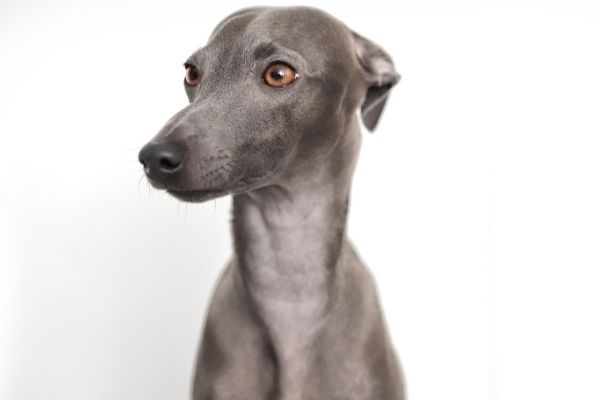
Health
Italian Greyhound Health Issues and Care
When purchased from a proper breeder who has provided documents proving the genetic health of their line, Italian Greyhounds are usually a very healthy breed. These dogs rarely need unexpected vet visits, and due to their short, silky coat, they do not retain ticks and fleas as readily as other breeds do and these pests are easy to see if they do occur.
Like every dog, however, there are some potential health concerns to be aware of. Hypothyroidism is a potential threat to Italian Greyhounds that is usually easy to detect and is successfully managed with medication. These dogs have also been known to develop teeth and eye problems. Owners should carefully monitor the health of their Italian Greyhound’s skin, teeth, and eyes.
Despite the impressive healthiness of this breed, some Italian Greyhounds may suffer serious health concerns if purchased from a puppy mill: A factory-like establishment that breeds dogs in inhumane conditions without regard to the health of the parents or lineage, or the actual dogs themselves. Puppy mills usually dispense their “product” to stores that sell puppies. If you purchase an Italian Greyhound puppy from a store, rather than a dedicated breeder, you may find that your puppy suffers from a lot of genetic health complaints that well-bred dogs generally won’t have. In the case of the Italian Greyhound, these may include the following: Mutant Alopecia (cryptorchidism or monorchidism), deafness, epilepsy, seizure disorder, juvenile cataracts, glaucoma, retinal atrophy, von Willebrand’s disease, and cancer.
Italian Greyhound Health Problems
- Epilepsy
- Legg-Perthes Disease
- Patellar Luxation
- Von Willebrand’s Disease
- Progressive Renal Atrophy
- Alopecia – In dogs with diluted pigment such as blue, blue fawn, etc.
- Portosystemic shunt (portosystemic liver shunt)
- Autoimmune hemolytic anemia
- Gingivitis (advanced stage leads to periodontitis)
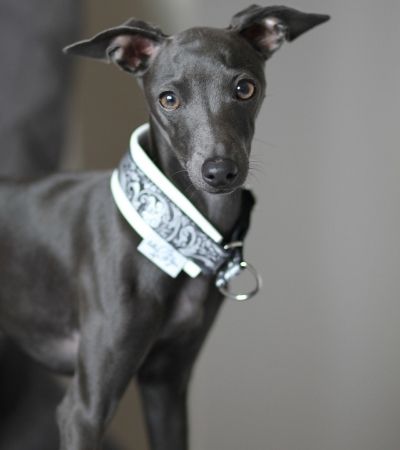
Conclusion
Overall, Italian Greyhounds make amazing companions. With adequate exercise and affection, they are excellent pets for apartments as they are clean, quiet, and often enjoy lounging indoors rather than running around. These dogs are very sociable animals, and love nothing more than to be with their people. Their slender, aerodynamic bodies make them excellent candidates for a variety of dog sports – most notably “Lure Tracing”. They are essentially a non-shedding dog that drools very little and has a minimal amount of health problems. Though they are highly intelligent, they require a patient master who is willing to train them in short sessions, using only positive reinforcement. When properly loved, trained and nurtured, the tiny Italian Greyhound will capture the hearts of everyone around them.
Italian Greyhound FAQ
Do Italian Greyhounds shed?
Italian Greyhounds shed very little. Their sleek coat is easy to maintain with a quick wipe over with a hound mit, and the occasional bath when needed.
Do Italian Greyhounds bark a lot?
IG’s tend to be a fairly quiet dog. They don’t bark excessively, but will bark to warn if they notice anything unfamiliar or see strangers approaching.
Are Italian Greyhounds good for allergy sufferers?
Italian Greyhound owners with allergies report that they have little to no issue with their Iggy’s, whereas they may have severe reactions to other dogs. Some people with severe allergies are able to manage by being particularly fastidious about keeping the house and bed sheets clean (IG’s love to sleep in your bed!), wiping their dog daily helps to remove any loose hair and allergens they may bring in from outside, and if needed, air filters can help keep the air clean and free of allergens.
If you have severe allergies, the best advice is to spend some time on a trial basis with an Italian Greyhound or two and see how you go. Finding a local dog shelter or reputable Italian Greyhound breeder will give you the best option to trial an IG before you welcome them into your home.
Italian Greyhound Facts Summary
| Breed | Italian Greyhound |
| Other Names? | Iggy, IG |
| Hypoallergenic? | Yes |
| Height | 13 to 15 inches / 33.02 – 38.1 cm |
| Weight | 7 to 14 pounds / 3.17 – 6.35 kg |
| Lifespan | 12-15 years |
| Temperament | Affectionate, Agile, Athletic, Energetic, Peaceful, Sensitive, Companionable, Intelligent, Shy, Mischievous |
| Colours | Black, Fawn, Chocolate, Blue, Red Fawn, Blue Fawn, Slate Grey, Red, Tan, Sable, Yellow, Grey |
| Coat – describe the coat | Silky, short, fine |
| How much grooming? | Low Maintenance – Brush at least once a week with a hound glove |
| How much shedding | Non-Shedding |
| Dander levels | Low dander level |
| Saliva – Do they Drool or Lick much? | Low |
| Energy levels | High-energy breed |
| How much exercise do they need? | Fairly active – 40 minute daily walk |
| Health problems | Prone to eye problems, hypothyroidism, allergies, epilepsy and patellar luxation |
| Good for apartment? | Very good with proper exercise |
| Suitable for kids? | Great with kids, but delicate. Best once children old enough to treat gently. |
| How much do they bark? | Average. Will bark to warn |
| Can they be left alone? | Not good with being left alone |
| Intelligent? | Average. Tend to bark if they notice something amiss. |
| Trainable? | Moderately – experience helps |
| How popular as a pet? | Somewhat popular |
| Any other important facts? | In Italy in the Middle Ages it was a beloved companion for noblewomen and there are many portraits with them in from those times. Today they are commonly found in racing events and also does well at rallys, obedience, and agility events. Their top speed is 25 miles an hour and they love to give chase. |

